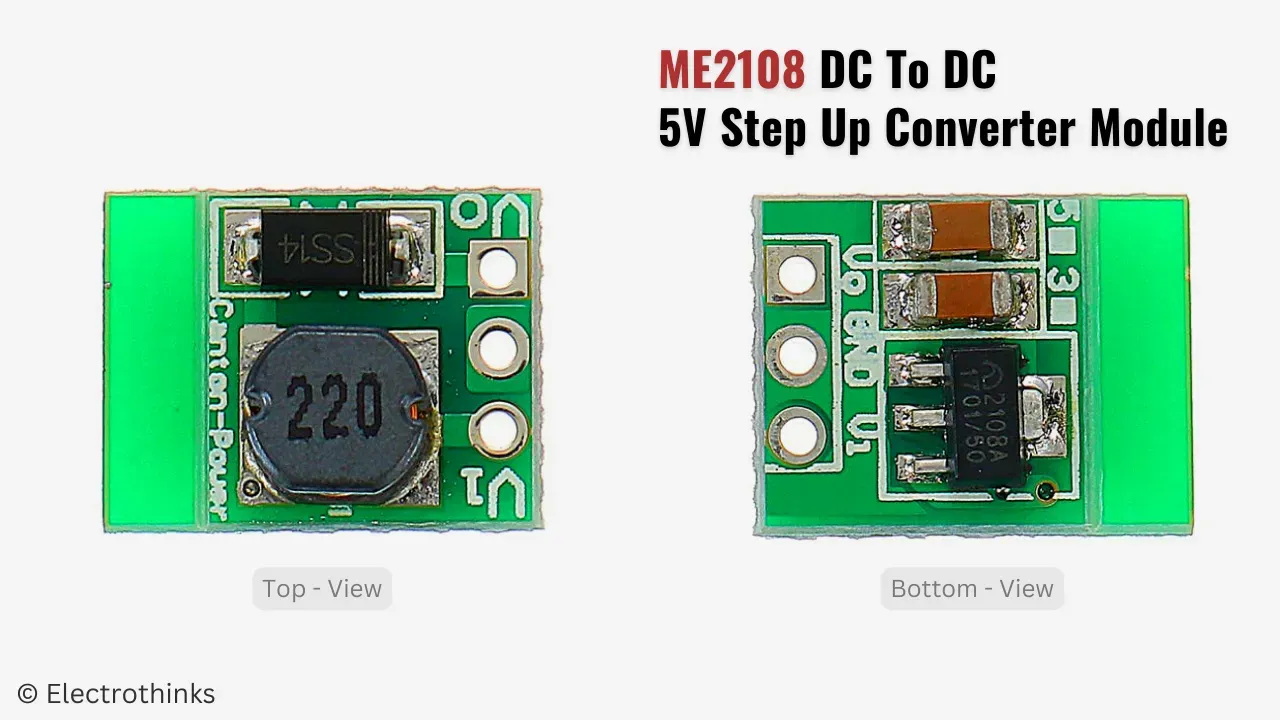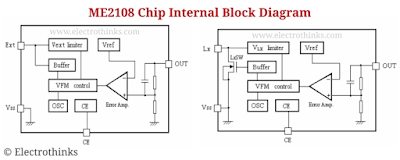The ME2108A module is a step-up power boost converter which can provides 5V DC stable voltage output at various input range - 0.9V, 1.5V, 1.8V, 2.5V, 3V, 3.3V, 3.7V, 4.2V to 5V (0.9-5V 600mA Mini).
The starting voltage of this converter module is 0.9V, the output current 7mA, and operates at a frequency 180KHz, the typical conversion efficiency is 85%. Using it can be made power bank, drivers for LED flashlights, etc.
It can boost the input voltage level and provides the amplified stabilized 5V output. For the different input ranges, the module consumes a different amount of current to produce a balanced output.
These module price typically ranged from $0.6 to $3, depending on the supplier and quantity purchased. It's always a good idea to compare prices from different suppliers to find the best deal.
This article will provide detailed information about ME2108 step-up converter module, including specifications, circuit diagrams, working principle, applications, and more. Let's get started!
ME2108 Module Specifications
The quick specifications of the ME2108A Module is given below:
- Type: DC-DC Boost Converter
- Model: ME2108
- Input Voltage: 0.9 to 5V
- Output voltage: 5V
- Maximum Output Current: 600mA
- Starting Up Voltage: 0.9V; output current: 7mA
- Input Voltage: 1-1.5V; output voltage 5V; current 40-100mA
- Input Voltage: 1.5-2V; output voltage 5V; current 100-150mA
- Input Voltage: 2-3V; output voltage 5V; current 150-380mA
- Input Voltage: >3V; output voltage 5V; current 380-600mA
- Typical Conversion Efficiency: 85%
- Dimensions: 1.1 x 1.05 x 0.75 cm
- Weight: 2 Grams
Pinout of ME2108 Module
The pinout (Vi, GND, Vo) is indicated on the ME2108 DC to DC step-up converter module:
- Vi: Positive voltage input (paired with GND/min)
- GND: Ground
- Vo: Positive voltage output (paired with GND/min)
ME2108 Module Circuit Diagram
Schematic of the ME2108 DC to DC step-up converter module circuit is shown below.
Components are used: U1 - ME2108A50PG chip, L1 - 22uH choke, D1 - SS14 Schottky diode, and C1, C2 - 12uF ceramic capacitors.
Working Principle of ME2108 Module Circuit
The main component of this converter module circuit is a very popular ME2108A50PG IC. The block diagram shows that everything necessary for operation is contained in the chip itself except for the rectifier Schottky diode, capacitors, and the boosting element the choke.
The most basic advantage of this microcircuit is an ultra-low idle current, but the maximum output current is 0.6 ampere, and is possible to increase it by a connection of an external transistor.
The circuit operates in a simple way the microchip (U1) itself can be accepted as a switch that works with a very high frequency more precisely 180 KHZ as the manufacturer indicates.
When the switch closes, the power from the battery goes to the choke (L1), and energy is accumulated in it. When the switch is opened due to self-induction, there is a surge voltage, which is several times higher than the supply voltage. The more energy pumped into the choke the more it keeps. The current and voltage depend on the parameters of the winding of the choke. This splash is then rectified into a direct current and accumulated in the parallel capacitors (C1, C2).
The chip feedback maintains voltage at 5 volts, when we connect the load to the output of the converter, it will actually be powered by the energy stored in the capacitors.
The switching accumulation and return of energy occur exactly 180 thousand times per second. Despite the pulse mode of operation of the microcircuit as well, the components of the circuit will heat up, or to be precise exactly 15% of initial power will be dissipated in the form of unnecessary heat.










No comments
If you have any doubts or questions, please let me know. Don't add links as it goes to spam. Share your valuable feedback. Thanks